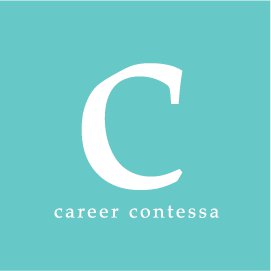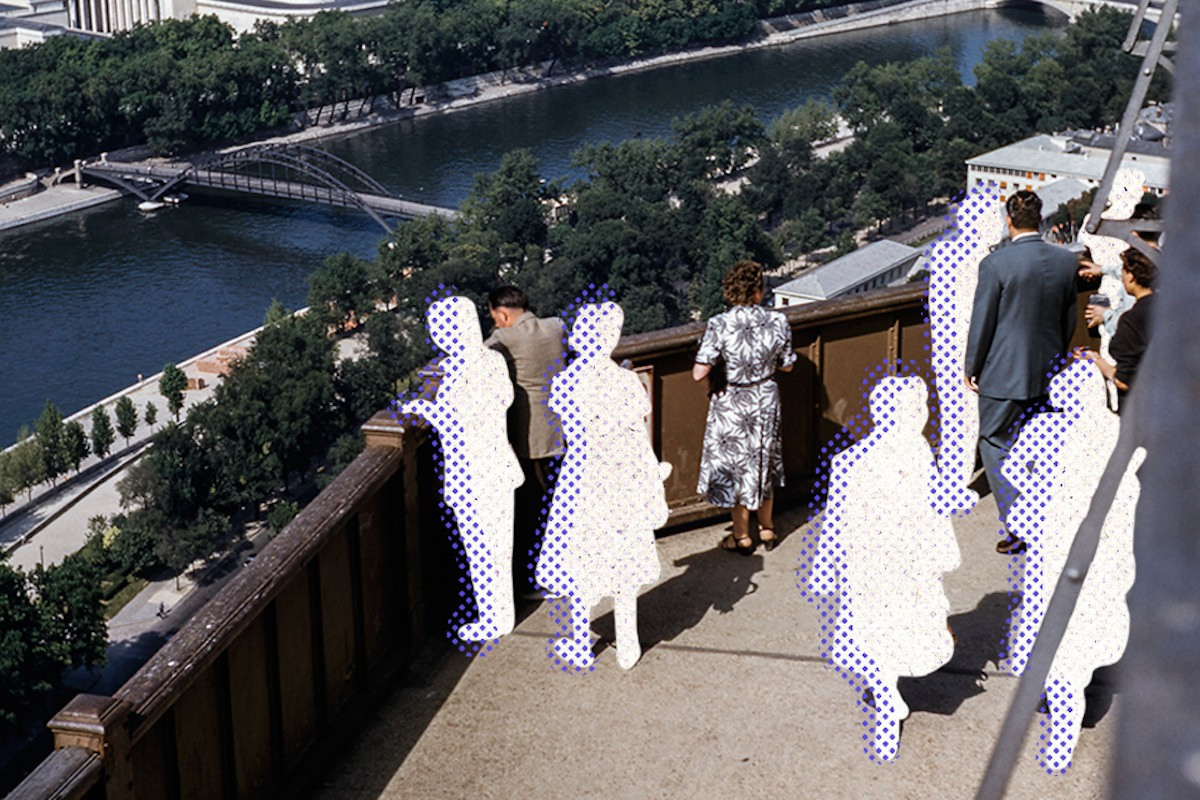I hate writing cover letters.
Good, glad we have that established off the bat. A cover letter is important. While your resume explains "the what" of your professional past, your cover letter provides "the how".
What are we going to do to tackle writing the cover letter? We're going to break it down.
In this piece, we'll break down the cover letter into five easy pieces. In each section, we'll share helpful tips to infuse yourself into the document. By the time you've written your cover letter, you'll be recognized as an unforgettable candidate.
You may as well prepare yourself for the call to interview. Let's write the cover letter.
What Is a Cover Letter?
We're glad you asked. A cover letter is a
personalized one-page document that explains your interest, qualifications, and skills as they pertain to a job opening. When effectively paired with a
dazzling and rizzy resume, a great cover letter adds color to your experience, your work history, and your personality.
Do I Have to Write a Cover Letter?
Yes. 85% of hiring managers still want to see a cover letter, even if they don't read them. We know, we know, it's irritating, but it's true. The cover letter is your chance to explain why you're a good fit with examples, stories, and maybe a little cliffhanger at the end?
Wait, Do I Have to Write a Cover Letter for Every Job I Apply To?
If you didn't like our answer to the last question, you'll hate this one. Yes, you should customize your cover letter for each application. If nothing else, think of your cover letter as an insurance policy or extra credit work. It's never going to hurt.
Here's the good news. We are going to stick to the real purpose of a cover letter—showing who you are without boring a hiring manager to tears. To that end, we'll unpack ideas and anecdotes to add to show that you're the best fit.
Have more cover letter questions? We've answered all of your biggest queries in our
cover letter FAQ.
Dear Hiring Manager: How to Write a 5-Paragraph Cover Letter
If you're going to make the effort to write a cover letter (and you should!) then let's make it a great cover letter. We're going to take you back to middle school by breaking your resume up into a
classic five-paragraph essay.
Get ready to introduce the hiring manager to you, not the static resume version of "work you".
1. Opening Paragraph: The Introduction
The introduction is the real catch or release for the hiring manager.
These few sentences will determine whether or not the hiring manager is going to take the time to read the rest of your cover letter. Therefore, this is the most important part of your cover letter.
Use the introduction to capture your audience—using three key sentences.
- A sentence showing you are aware of the company
- A sentence that lays out your experience, with context and details
- A sentence introducing your value proposition at the company
A Bad Opening Paragraph Example:
My name is Caileen Holden and this cover letter is intended to express my interest in the Digital Marketing position as listed on LinkedIn. I believe my background in digital marketing and social media renders me an ideal candidate for this role.
Are you still awake? Your hiring manager is busy drooling on your cover letter, lost in a deep nap because that is one mighty boring intro. This introduction tells the hiring manager something she already knows; you are applying for a job.
A great question to ask yourself while writing your cover letter is this—what new & valuable information am I communicating?
A Good Opening Paragraph Example:
As an admirer of [Company] and its bombastic debut in the [Industry] I was thrilled to see a Brand Strategist position open. Having spent the last three years focused on building and growing the messaging for [Current Company] through targeted SEO and social awareness, I would love the opportunity to communicate your compelling story to the masses.
This approach does a few things. First, it starts off with a compliment. Have you ever met someone who compliments your shoes right off the bat? I’m no doctor, but there is something psychological that happens at that moment, wherein you immediately like that person. From there, this approach explains where you were working and names a few of the tools you used.
This is not only a good way to introduce your previous position, but also to offer a teaser of your skill sets. Lastly, this approach uses one sentence to communicate the plans you already have to move forward. This shows the hiring manager that you have already placed yourself in the role and have at least the outline of a game plan.
2. Second Paragraph: Why You're The Perfect Fit
Once you have your introduction written, you probably feel better about writing the cover letter. In addition to introducing who you are and teasing your value proposition, the introduction lays the framework for you to expand on who you are.
Your resume will give the CliffsNotes version of your experience, dates, companies, and positions held. Use this paragraph to expand on these.
- What are some projects you worked on that have had a big impact?
- What are some growth initiatives you've led?
- How did you achieve a promotion or a career pivot?
- What responsibilities were you given and why?
- What invaluable skills do you have?
Think of this while writing this paragraph—instead of describing what you did, explain how you did it.
3. Third Paragraph: Highlight Why The Company is a Perfect Fit for You
Now that you have told the company more about your history as an employee, expand on why they matter to you.
- Have you been a longtime fan of the company?
- Do you use the products they may sell?
- Have you followed them in the news lately?
Use the first few sentences to explain what attracts you to the company. Why do they impress you? From there, provide your own thoughtful perspective on what you, specifically, can bring to the company. Perhaps there is a specific idea you can tease in your cover letter. Place yourself in the middle of the office, and show them you belong!
4-5. The Closing Paragraph + Teaser
This will be your closing paragraph. Just like your 6th-grade teacher taught you, this is where you will bundle up the main points you introduced, reiterate them and conclude your thesis.
In the closing paragraph, make your offer. Tell the hiring manager that you would love to be considered for the role. Remember all the social media strategies you talked about in paragraph two? Express that you would love to tell her more about your thoughts on social media strategy for this position.
Since you spent the bulk of the letter explaining your value proposition, this is a great time to offer it to your hiring manager.
We'll get more into this later, but make sure those last lines really cinches the deal; so much so that the recruiter or hiring manager wants to call you the minute they finish ready.
Bonus: Closing Salutation + PostScript
It's time to wrap it up and send it out. Your cover letter sign-off should be professional with a dose of warmth or personality. Some popular email closings work well to close out the cover letter. Some of our favorites include:
Thank You,
Cheers!
Best Regards,
Sincerely,
Warmly,
Enthusiastically,
Finally, close out by signing your first and last name. You can also include a signature with any contact information you'd like to share. Some contact information that might be professionally intriguing includes your LinkedIn profile, your (professional) Twitter handle, your online portfolio, and your phone number.
Who doesn’t love a good P.S. at the end of any letter or email? Use the postscript to add a tidbit, share a detail or a fun fact about yourself, or plainly, reiterate your enthusiasm.
Unlike the resume, you can
let your personality shine brightly in a cover letter. The P.S. is a great place to test that out and to catch the hiring manager’s attention one last time (before she calls you for your interview, of course.)
By breaking your cover letter down, it should be easy to get it done! Try it out now. Pretend you're applying for your dream job and your dream company (hey, maybe it’s a letter to yourself, future CEO.) What would your introductory paragraph look like?
9 Tips for an Unforgettable Cover Letter
Now that we have the structure squared away, let's sprinkle some diamonds into this cover letter to make it absolutely unforgettable.
Step 1: Reference Your Resume in Content and Design
The cover letter is a companion to
the resume. Where the resume is a line drawing of your work history, your cover letter is the color and shading.
Use your cover letter to add context to some of the accomplishments mentioned in your resume. If you helped to grow your company's customer base in a certain geographical region, explain the creativity and critical thinking that got you there. Infusing your
soft skills throughout your resume and cover letter could be the very thing that sets you apart as the ideal (and unforgettable) candidate.
The same goes for design, especially when you're applying to a position that mentions "attention to detail" as a desired skill.
Echo your
resume in design by using the same fonts and a matching cover letter header. This small detail is what will actually show a hiring manager that you are, indeed,
a "details" person.
Step 2: Research Everything About the Company
One of the biggest failures in an interview process happens when a candidate doesn't know anything about a company.
Don't be that candidate. Do your best Harriet the Spy and uncover everything!
Here are a few things to research and sprinkle into your cover letter to really impress:
- Hiring manager's name
- What the organization does (you'd be surprised how many job applicants cannot answer the question, "What do we do here at [Organization]?"
- The company's mission and core values (bonus points if you can effectively align your core values)
- Recent accomplishments, projects, or news mentions
- Leadership
- Goals the company is working towards
- Recent accomplishments
Step 3: Address the Cover Letter When Possible
If you know the hiring manager's name, address your cover letter directly to them.
If you don't know their name, do a little research. This will be substantially easier when applying for a role at a smaller company.
Addressing your cover letter with the hiring manager's name shows that you've done your homework. Here are a few ways to find their name, if possible:
- Google team members or research the team on LinkedIn
- If you are working with a recruiter, ask for the hiring manager's name
- If you know someone who works there, ask them for the hiring manager's name
If you can't find the name, you can start your cover letter with a regular "Greetings" or one of
many other ways to start a letter. Make sure it matches the tone of your cover letter and that it feels authentic to you and your voice.
Step 4: Start Your Cover Letter With a Hook
Think of yourself as a salesperson or an advertising professional (if you are either of these, then this point is extra important). Your cover letter is your long-form copy that explains the problems you can solve along with
your biggest accomplishments.
How can you zhuzh up your work experience to add excitement? How can you relate your past experiences to the work you're aiming to do?
Step 5: Imagine Yourself in the Role
Picture yourself in the role. Share a few key priorities you'd like to address in your role, without spilling all the details. As with many of these
cover letter writing tips, try to write your cover letter so that the recruiter or hiring manager is absolutely compelled to call you in for an interview.
Here are some prompts to help you imagine yourself in the role:
- What are some repeatable achievements I can put into place in my new job?
- Does this company have a major goal that my experience aligns directly with?
- What are some things I would be excited to work on in my first 90 days?
Step 6: Always Use Keywords
When writing your resume and your cover letter, adding relevant keywords is one of the simple steps that can make a huge difference. The best part? You have the cheat sheet on hand. Yep, we're talking about the "hidden secrets" in the job ad.
The job description has all of the keywords you need. Make sure to echo the most important ones across your resume and your cover letter.
This has the two-pronged benefit of showing both the hiring manager and an applicant tracking system that you have the skills, the experience, and the expertise
listed in the job description.
Step 7: Don't Be Afraid to Be Yourself
We go more into this in our other piece about writing a
creative cover letter, but the point is as follows.
A cover letter doesn't need to be stale or boring. Use this document as a way to let your voice through; to set yourself apart. The difference between a good cover letter and a great cover letter is in the details that you bring.
Step 8: End Your Cover Letter With a Compelling Teaser
Think of some of the lines from the most epic movies. Humphrey Bogart's "This is the beginning of a beautiful friendship" could be just the thing to hook a hiring manager.
You can also consider asking a question that places you in the role. Something like this is great:
"Could you imagine growing your traffic by 10x in the next 3 months? I'd love to help you do it."
If you're feeling extra spicy, consider ending your cover letter with a riddle that you can answer in your next interview. Of course, make sure that the organization is more casual, fun, or creative when trying one of these cliffhanger endings.
Step 9: Proofread or Else!
If you've ever found a typo after you've sent an email, resume, or cover letter, you know the pain all too well.
Imagine having the perfect transferable skills and the exact experience needed for the role that seems made for you. Now, imagine having your resume sent to the "no" pile because you wrote that you've, "always dreamed of becoming a manager."
Check, double-check, and have a friend check. Then press send.
How to Write Cover Letters for Unique Situations
This article would be incomplete if we didn't mention a few unique circumstances—and how to customize your cover letter to them.
Below are a few cover letter tips for job seekers looking for their first jobs, an internal move within your organization, or for someone conducting a job search after taking a career gap.












